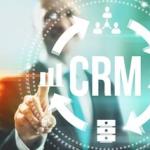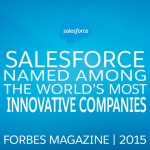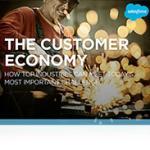
The great thing about cloud computing, apps and mobile devices is that, in theory, the entire world can be your customer. For small and medium-sized businesses, that can be game-changing because they no longer have to think about prospects that are within a specific location or niche.
In reality, of course, creating an effective sales and marketing strategy starts with a target that is focused and allows you to make the right decisions about where to invest your time, talent and other resources. The notion that there are only so many actual people or organizations that will purchase a particular set of products and services is referred to as your total addressable market (TAM). Calculating and honing in on your TAM may be among the most surefire ways to grow your business.
1. Define — And Discuss — Your TAM
There are many ways to think about and quantify TAM, and it may be easier or difficult depending on the nature of your company and what it offers. The book Innovation-Based Entrepreneurship101: A Handbook on 24 Steps to Help Make Entrepreneurs More Successful from MIT may have one of the best ways to think about it. According to the authors, TAM is the amount of annual revenue, expressed in dollars per year, that your business would earn if you achieved 100% marketshare. Even if you’re particularly optimistic about sales, it’s best to look at what volume of customer acquisition and selling will be sustainable over the long term.
“You are looking for a market that is big enough for you to get to critical mass, develop key capabilities and get to cash flow positive in the market,” the book says. “On the other hand, if the market is too big, you will likely not have sufficient resources to compete and you may get overwhelmed and either not succeed or have to raise money without much of a track record for potential investors to evaluate.”
TAM is something that, once properly understood, should be discussed and communicated across your team as widely as possible, so that each key player can adjust their own goals and objectives accordingly. This includes:
- Key verticals, segments or named accounts that the marketing department or marketing lead should be nurturing through demand generation campaigns.
- Quotas for the sales team, and objective around growing share of wallet within the TAM.
- The technologies that will best help the entire organization discover, engage and convert the TAM into customers.
2. Forecast TAM Changes, Then Change Your Plan
Most companies operate the same way: they create or update products and services, develop a sales and marketing plan, and then go after their customer base as though it was a static, stable entity. Much like an individual business, your TAM will look different from one year or even possibly one month to the next.
For example, consider when a mature industry is suddenly turned upside down by a technological advance that threatens their business model. Taxis, newspapers and hotels are just three examples. The TAM for products and services aimed at those companies changes significantly based on how competitive they need to be, or how hard they need to work to merely survive.
The flip side is when technology or some other factor spurs more companies to form and grow within a particular segment. Mobile apps, for instance, allowed many developers to create businesses that would not have existed before. It also opened up new opportunities within large incumbent businesses that wanted to take advantage of mobile apps.
Beyond technology, think about things such as economic fluctuations, mergers and acquisitions within your TAM and even particular budget cycles that may influence how willing your TAM is to make a purchase in a given period. A TAM should be “managed” the way you could a specific customer relationship.
3. Use Data To Determine A More Accurate TAM
In the early days of a company’s life, the TAM may be based on anecdotal evidence or fairly rudimentary, generic market research information. A big part of evolving as an organization depends on how well you collect and manage information to not only close a deal, but provide predictive intelligence about how big or small your TAM really is.
Companies that use CRM, for example, often keep track of each customer interaction in order to upsell, cross-sell and so on. That data is valuable in isolation, but it becomes a gold mine for strategy when it’s looked at more holistically across customers. To see how often they buy, who’s involved in the decision, the key elements that contribute to a close—these will provide a much more granular sense of whether, based on your current size and resources, you can take on a larger TAM. This could influence everything from additional technology investments to hiring you’ll do in the year ahead.
Remember that the “T” in TAM may represent something you’ll never entirely reach, but is a benchmark for your company’s day-to-day performance. Sales is always about hitting your number, but this may be among the most important numbers you have to know.























